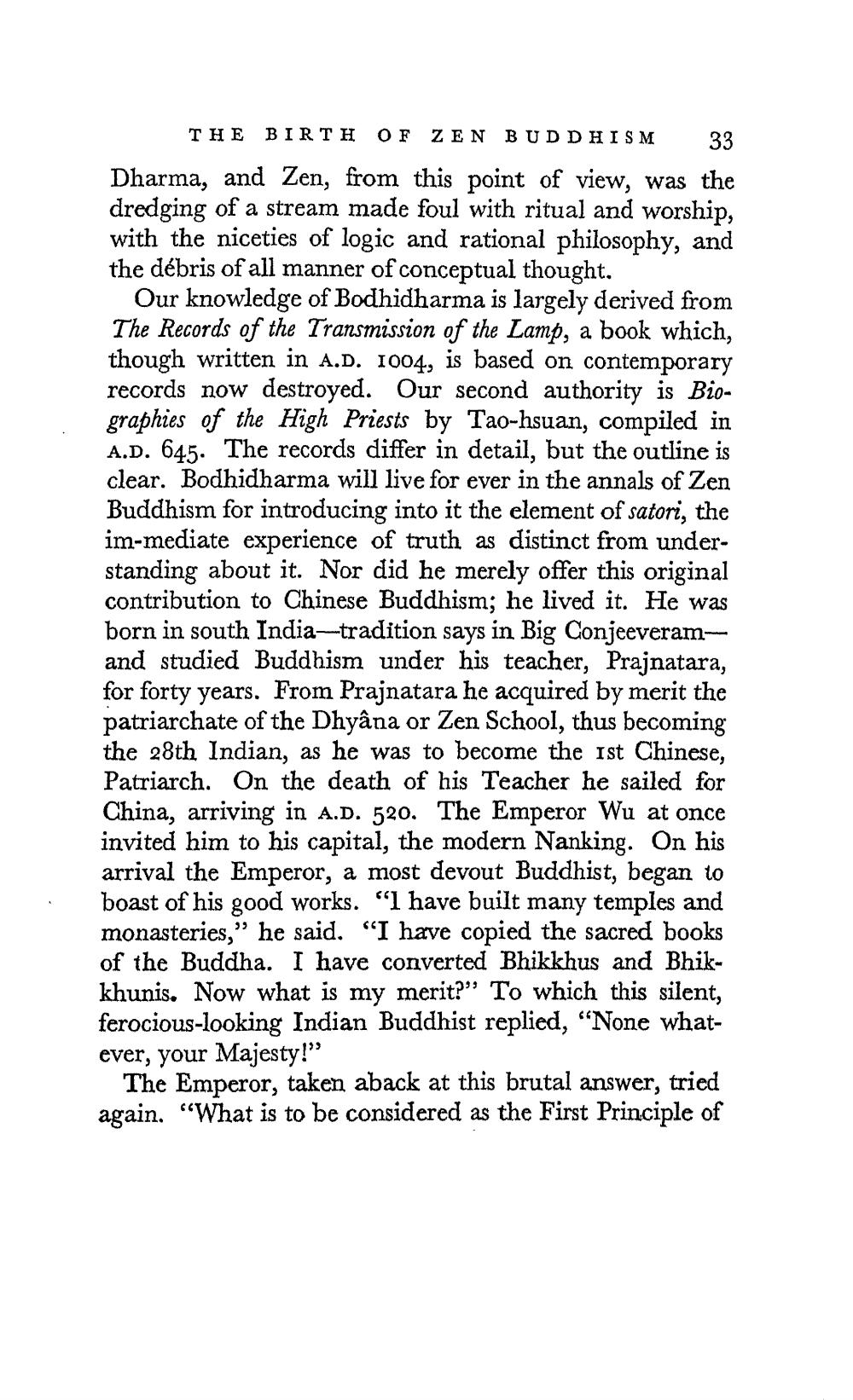________________
THE BIRTH OF ZEN BUDDHISM 33 Dharma, and Zen, from this point of view, was the dredging of a stream made foul with ritual and worship, with the niceties of logic and rational philosophy, and the débris of all manner of conceptual thought.
Our knowledge of Bodhidharma is largely derived from The Records of the Transmission of the Lamp, a book which, though written in A.D. 1004, is based on contemporary records now destroyed. Our second authority is Biographies of the High Priests by Tao-hsuan, compiled in A.D. 645. The records differ in detail, but the outline is clear. Bodhidharma will live for ever in the annals of Zen Buddhism for introducing into it the element of satori, the im-mediate experience of truth as distinct from understanding about it. Nor did he merely offer this original contribution to Chinese Buddhism; he lived it. He was born in south India-tradition says in Big Conjeeveramand studied Buddhism under his teacher, Prajnatara, for forty years. From Prajnatara he acquired by merit the patriarchate of the Dhyâna or Zen School, thus becoming the 28th Indian, as he was to become the ist Chinese, Patriarch. On the death of his Teacher he sailed for China, arriving in A.D. 520. The Emperor Wu at once invited him to his capital, the modern Nanking. On his arrival the Emperor, a most devout Buddhist, began to boast of his good works. "I have built many temples and monasteries," he said. "I have copied the sacred books of the Buddha. I have converted Bhikkhus and Bhikkhunis. Now what is my merit?" To which this silent, ferocious-looking Indian Buddhist replied, “None whatever, your Majesty!"
The Emperor, taken aback at this brutal answer, tried again. “What is to be considered as the First Principle of




